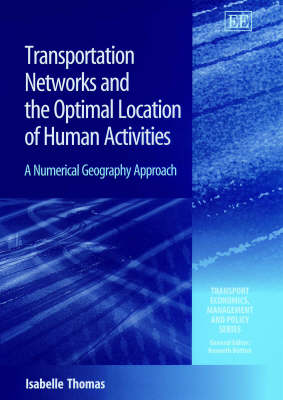Transport Economics, Management and Policy
1 total work
Transportation Networks and the Optimal Location of Human Activities
by Isabelle Thomas
Simulations are performed on different toy-networks: several transportation networks are designed and their effects on location-allocation results are tested on different markets. Several optimal location models are used. The author then attempts to discover how the modelling results are affected by negative externalities or zone pricing policies. Finally, these results are applied to real-world situations, illustrating and confirming the results of the simulations performed on toy-networks.
This volume will be considered as an interesting and original approach for location-modellers as well as planners. Transportation Networks and the Optimal Location of Human Activities will also appeal to geographers, spatial economists, location-allocation practitioners and transportation researchers.
